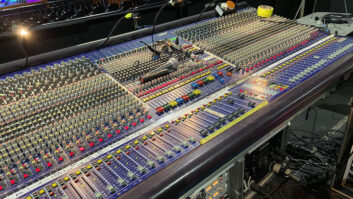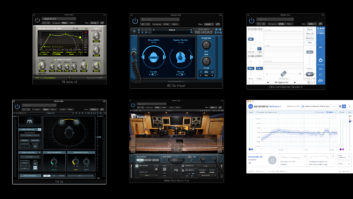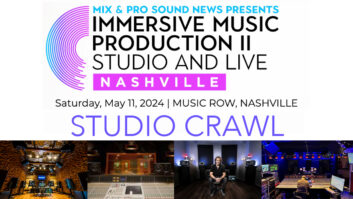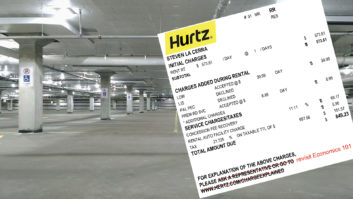There are plenty of advantages to working in a home studio, both financial and practical, but sometimes it’s more than worth it to record at least part of a project in a commercial facility. I had that experience this past week, doing a long tracking session with one of the bands I play with.
Working on an EP-length project, we decided we’d get a better result recording basic tracks in a big, acoustically optimized room. Fortunately, Sound on Sound Studios, a facility that’s literally a large New York Studio transplanted to suburban New Jersey, and which just won a 2019 NAMM TEC Award for Best Studio Design, is located nearby. (Read this Mix feature story for more about the studio.)
So, the band figured we’d get better basic tracks by taking advantage of the superior isolation provided at Sound on Sound, not to mention the great mics, outboard gear, console and engineering. We were able to set up in a way that created little or no bleed, and we banged through nine songs in a single afternoon session. We walked away with a drive full of Pro Tools sessions and a lot more work to do. But it provided an excellent foundation for the project.
Read more Mix Blog Studio: Mixing By Committee.
Yes, it cost us some money, but split between band members, it wasn’t bad, and the results were more than worth it.
It was my first large-studio session in a while, and I’d forgotten how nice it is to have somebody else set up all the mics, run all the cables, deal with the Pro Tools session configuration and any necessary troubleshooting, and take care of engineering. All I had to do was plug in my guitar and pedalboard and play.
What’s more, even though everything was well-isolated, we still had pretty good sightlines with each other, which made it a lot easier communicate while playing. And because the studio has an Aviom personal monitoring system, we were each able to control our own mixes, which was really handy.
Trying to get basics done for nine songs in five hours was no easy task, and I’m sure if we’d tried this in one of our home studios, it would have taken a lot longer—maybe a couple of long days—and would have been a lot more work. And the sounds, especially the drums, would not have been as good.
The instrument and gear collection at the studio was also beneficial. The keyboardists got to record with a Steinway grand and a B3, so they were thrilled. I got to pick from a vast array of guitar amps to record through, and the drummer was given the choice of Gretsch and Pearl kits (he decided on the Gretsch, in case you were wondering).
Yes, we were on the clock, so there was some pressure we wouldn’t have had in a home studio session. But in some ways, it was helpful in that it kept us intensely focused.
My overall takeaway from this experience was that it was definitely something I’d do again. For full band recordings or other ensemble projects, there’s a lot to be said for using a quality commercial studio for at least the basic tracks.







